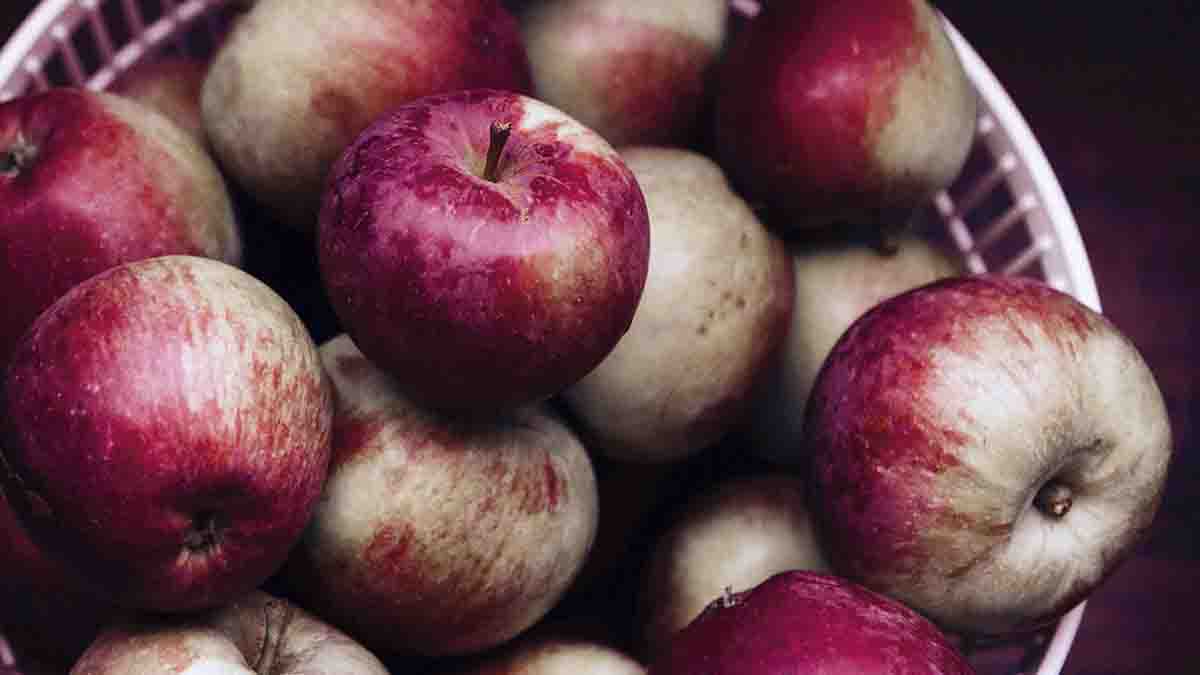AS I SEE IT
 BY MARIANNE HERON
BY MARIANNE HERON
Apples have quite a juicy reputation ranging from their temptation of Eve in the Garden of Eden to their connection with immortality in Celtic mythology. Before burly pumpkins muscled in on the act, apples had a leading role in Halloween tradition: featuring apple bobbing, toffee apples and the game of divining your future love in the initials formed by apple peel.
But do you ever stop to think before you take a crisp bite where your eating apple comes from? It’s a pity that in the heart of apple growing counties like Kilkenny, Tipperary and Waterford there is a 95% chance that rosy cheeked fruit is an import. Despite apples being our No. 1 favourite fruit, (95% of us eat them) and that our climate is well suited to apple growing, there aren’t enough Irish apples on our supermarket shelves.
It wasn’t always so, according to Cornelius Trass of the Apple Farm, Cahir, Co. Tipperary where his family farms 40 acres and grows both eating and cooking apples. “When Ireland joined the Common Market we became open to competition from imports where countries like France have lower costs than ours.”
Some of the 15 red eating varieties grown on the Trass’s farm have names like pop stars: Red Elstar or Red Prince. Old favourites like Cox’s Orange Pippin and the ubiquitous cooking apple Bramley Seedling, which dominates the Irish market, are also grown.
There are about 40 Irish apple growers in the 26 counties with orchards varying in size from three or four acres to up to 100 and over 60 varieties of Irish apples. Several Irish growers got together a while back under the marketing banner Celtic Orchards to increase awareness of Irish apples and later disbanded. With a domestic market worth €173 million last year, there should be room for Irish apple farmers to grow their share of it but this depends on several factors.
Research carried out by Bord Bia found that awareness of where apples come from is low, that quality was perceived as being more important than price alongside a preparedness by shoppers to support premium Irish apples and a desire for greater emphasis on origin.
“There is demand for Irish apples but at what prices does that begin to drop off and, if the price is lower than the cost of production, then there is no point in trying to supply that demand,” says Cornelius, pointing out apples aren’t the most profitable of crops.
A check on the apples available at my nearest Dunnes store, where Pink Ladies (aka Cripps Pink) are giving the Grannies Smith a run for their money, revealed a few trays of Irish apples among the banks of imported apples originating from France, Italy and New Zealand.
Apples have a lot going for them, that claim ‘an apple a day keeps the doctor away’ has a sound basis for apples are good for both our own health and environmental health. They are full of vitamins, fibre and anti-oxidants and they promote cardio-vascular health. Apple trees are good for carbon sequestration and locally grown produce helps cut down on carbon emissions from transport. Climate change, incidentally, given uncertain weather and earlier flowering associated with the risk of frost damage, isn’t helpful to apple growers either here or overseas.
Increased awareness of home-grown apples may help to boost demand. Also, Teagasc have a horticultural development plan which aims to increase Irish apple production, studying different types of apples, methods of production and disease control.
There is nothing like growing and eating your own plump apples straight from the tree. Tom English of English’s Fruit Nursery at Adamstown, Enniscorthy, Co. Wexford which supplies both the public and the nursery trade has some suggestions for small gardens. “Discovery, a red apple that ripens before the kids go back to school is ideal and Katy is another red apple that ripens early,” he says. Grown on a M26 root stock these grow to 10 feet or on an M9 to under five , there is also a Twin apple tree, grafted to produce two different kinds of fruit.
Time to get the spade out, this is the right season to plant fruit trees!

















